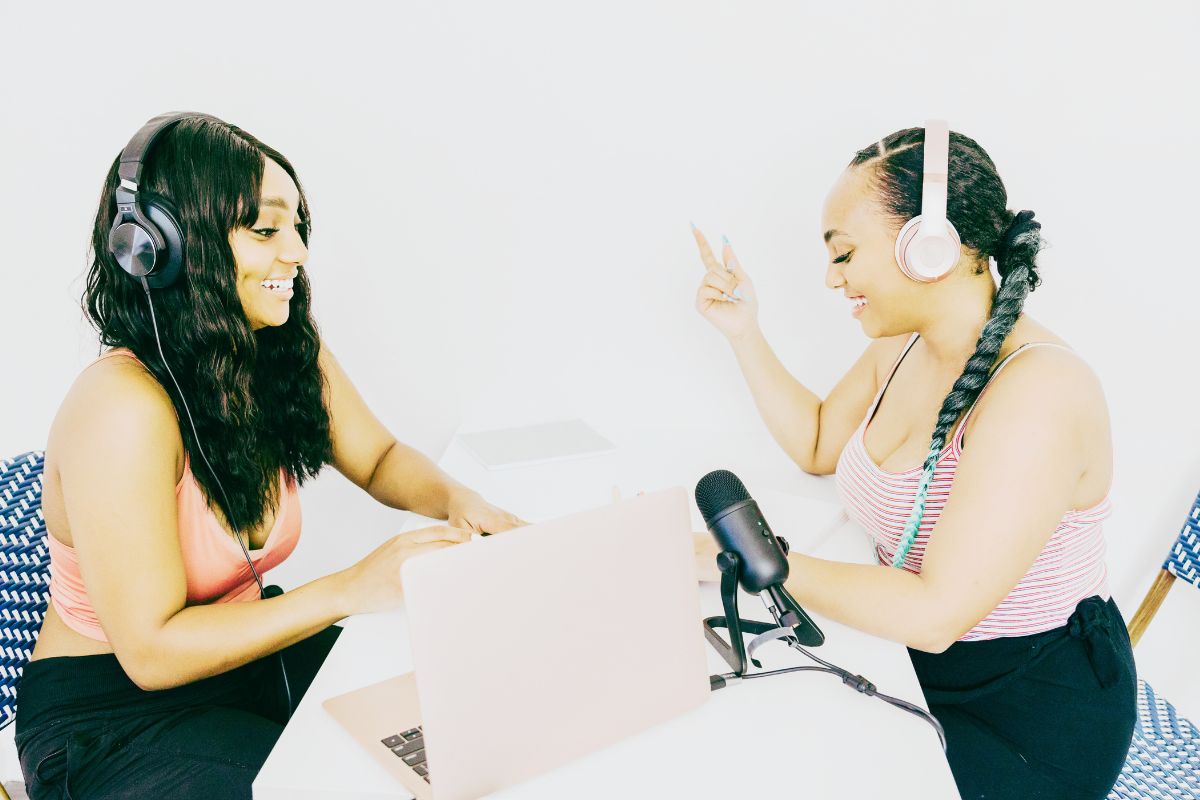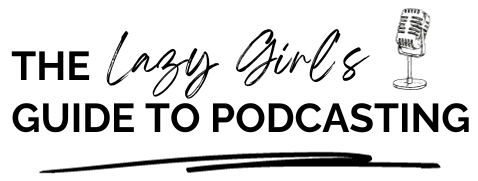
Why Your Podcast Format Matters More Than You Think
With the rise of podcasts and podcasting, more and more entrepreneurs and coaches are jumping on board and starting their own podcast shows.
However, many new podcasters overlook the importance of a well-crafted format and default for the interview style of podcasting. Whilst there’s nothing wrong with this format (it’s what I predominantly use on The Confident CEO Podcast), it’s important to remember that it isn’t the ONLY podcast format that you can use.
Your podcast format is essential to keeping your audience engaged and coming back for more. And it’s way more than just talking into a microphone and hitting ‘record.’
The way that you structure your podcast can make or break your success.
So, in this post, we’ll explore why your podcast format matters more than you think and how you can improve it to keep your listeners tuning in week after week. Whether you’re a seasoned podcaster or just getting started, this information will help you create a more engaging and successful podcast. So, let’s dive in…
Why your podcast format matters
When it comes to podcasting, many people focus solely on the content they are delivering, and while content is important, the format of the podcast is just as crucial.
Why? Well, because the format of your podcast sets the tone and structure for your show; and it can either entice or repel your audience. A well-crafted podcast format can help you establish a steady audience and keep them coming back for more.
A good podcast format will keep your audience engaged and interested in your content. It will help them understand what to expect from each episode and make it easier for them to follow along.
On the other hand, a format that is disorganised or poorly structured can confuse, bore, or even frustrate your audience.
In today’s fast-paced world, it’s important to remember that your listeners and potential listeners have a lot of options for entertainment and information available to them. And if your podcast format doesn’t capture their attention or hold their interest, they will quickly move on to something else.
Understanding your audience
Knowing your audience is crucial to creating a successful podcast format. Your audience will determine the direction of your podcast and the format that will best resonate with them. Understanding their preferences, interests, and listening habits will help you tailor your podcast to their needs and keep them coming back for more.
You can gather information about your audience by conducting surveys, analysing your podcast analytics, and engaging with them on social media or through emails.
This information will help you create a podcast format that speaks directly to your audience and keeps them engaged. It’s important to remember that your audience is not a monolithic group, and you may have different types of listeners with different preferences. That’s why it’s essential to create a format that will appeal to as many of your listeners as possible.
But…
And this is a big and important ‘but;’ at the end of the day, you’re the podcast host and you’ve got to be comfortable with the format that you choose for your show.
There is no point (in my opinion anyway!) forcing yourself to host a show solo when the very idea gets you terrified and tongue-tied. There’s also no point in hosting an interview-style show if you struggle with interviewing people or striking up conversations with people you don’t know.
So whilst it’s important to look at your research results and what your audience wants and likes, don’t neglect your own wants and likes. A show that isn’t of a format that your audience might immediately think they want, but you enjoy presenting, will be far more appealing to you and your audience than forcing yourself into presenting in a format that feels unnatural and unenjoyable for you. This is because if you choose a format you are uncomfortable with your discomfort will come through and your audience will notice it.
And an uncomfortable and unhappy host is not who anyone wants to hear from.
Different types of podcast formats
There are several different types of podcast formats that you can use to structure your show. And as we’ve already covered, choosing the right format for your podcast will depend on your content, audience, and personal preferences.
Here, we will go through some of the most popular podcast formats:
The conversational format
The conversational format is a very popular type of podcast format. It involves two or more hosts having a casual conversation about a particular topic or theme.
This format is great for creating a relaxed and informal atmosphere that can help your audience connect with you and your content and is ideal for podcasts that cover a wide range of topics, such as news, pop culture, or comedy.
It is also a great format for interviews and guest appearances, as it allows for a natural flow of conversation. However, it’s important to remember that this format requires chemistry between the hosts and good preparation to avoid rambling or going off-topic.
Format pros:
- Dynamic and engaging dialogue.
- Diverse perspectives and insights.
- High audience retention.
Format cons:
- Scheduling can be challenging, especially if the hosts/guests live in different time zones.
- Creative differences can arise between hosts.
- Risk of talking over each other or not giving each other enough time to speak.
Real-life example
A great example of a conversational format podcast is The Therapy Crouch ⬇️
The interview format
The interview format involves one host interviewing a guest about a particular topic or theme.
This format is ideal for podcasts that want to dive deep into a specific topic or provide expert insights on a subject. It also seems to be a bit of a default format for most new podcasts and podcasters.
An interview format allows for a more structured and focused conversation, and it can be used to introduce new voices and perspectives to your audience. However, it’s important to prepare for interviews thoroughly, so you can ask thoughtful and engaging questions that will keep your audience interested. You should also make sure that your guest is well-prepared and comfortable during the interview.
Interviews can be structured, or relatively informal, and choosing which type of interview you give will depend on your own presentation style and the tone of your podcast.
On The Confident CEO Podcast, for example, I conduct interviews, however, these are very casual and often feel more like a conversation with a friend rather than a rigid questions-answer interview.
Format pros:
- Opportunity to learn from experts and thought leaders.
- Variety of perspectives and insights.
- Opportunity to network and build relationships with guests.
Format cons:
- Scheduling can be challenging, especially if your guest has a busy schedule or you’re in different time zones.
- The quality of the interview can depend on the skill level of the host and how comfortable the guest is.
- The conversation can become repetitive if the host doesn’t ask unique or thought-provoking questions.
Real-life example
A great example of an interview format podcast is our very own The Confident CEO Podcast ⬇️
The solo format
The solo format involves one host delivering content on a particular topic or theme.
This format is great for podcasts that want to provide educational or informative content. This is also one of the best formats for you if you want to show off and demonstrate your own knowledge on a topic and really build your own authority within your niche to drive more sales or awareness to your business.
The solo format allows for more control over the content and pacing of your podcast. It also gives you the opportunity to showcase your expertise and personality. However, it’s important to keep your content engaging and avoid monologuing or going off-topic.
Some podcasters find the solo format really easy for them, and they love the freedom of being able to talk about a topic they’re passionate about. Other podcasters can’t think of anything worse than carrying a whole show by themselves without the support of a co-host or guest for an interview.
On The Lazy Girl’s Guide to Podcasting, I’ve adopted a solo format. This is because I wanted the opportunity to foster a community of individuals who want to learn from me and my podcasting expertise. By hosting my episodes solo, I can demonstrate my knowledge, build authority, and funnel listeners into various areas of my business.
Format pros:
- Full creative control over the content.
- Flexibility in recording and publishing schedules.
- No need to coordinate with co-hosts or guests.
Format cons:
- The lack of interactivity and dialogue can make the show less engaging.
- It can be challenging to maintain listener interest without a co-host or guests.
- Limited perspectives and insights.
Real-life example
A great example of a solo format podcast is our very own The Lazy Girl’s Guide to Podcasting ⬇️
The narrative format
The narrative format involves storytelling and can be used to create a powerful and emotionally engaging podcast. This format is great for podcasts that cover true crime, history, or personal narratives.
The narrative format requires careful planning, writing, and editing, as it involves creating a compelling storyline that will keep your audience interested. However, it can be a powerful way to connect with your audience on an emotional level and create a loyal following.
Format pros:
- Ability to create a compelling and immersive story.
- Unique audio experience for listeners.
- Opportunity to showcase creativity and storytelling skills.
Format cons:
- Requires significant time and resources to plan and produce.
- Limited opportunity for audience engagement.
Real-life example
A great example of a narrative format podcast is The Bravo Docket with Cesie and Angela ⬇️
The roundtable format
The roundtable format involves several hosts having a moderated discussion on a particular topic or theme. This format is great for podcasts that want to provide multiple perspectives on a subject.
The roundtable format allows for a lively and engaging conversation, and it can be used to showcase different voices and opinions. However, it’s important to have a skilled moderator who can keep the conversation on track and avoid talking over each other.
Format pros:
- A wide range of insights and perspectives.
- Opportunity to feature guests who may not be able to commit to a co-hosting role.
- Opportunity to showcase various experts in a particular field.
Format cons:
- Scheduling can be challenging, especially if the panellists live in different time zones.
- Risk of talking over each other or not giving each other enough time to speak.
- The larger the panel, the more difficult it is to keep the conversation organised.
Real-life example
A great example of a roundtable format podcast is Red Table Talk ⬇️
The hybrid format
Remember, there is nothing wrong with combining different formats. For example, hosting a podcast where there is a mix of solo episodes and interviews.
The main benefit of this hybrid format is that you get to provide your audience with the expertise of others, but also build your own authority by sharing your own knowledge.
An example of a podcast that gets this balance of the hybrid model really well is She Calls Her Shots ⬇️
How to choose the right format for your podcast
Choosing the right format for your podcast will depend on several factors, including your audience, content, and personal preferences.
Here are some questions that you might want to consider when choosing your podcast format:
- What is the focus of your podcast?
- Who is your audience, and what are their preferences?
- What is your personal hosting style?
- What are the strengths and weaknesses of each format that you and your audience like?
- What type of content do you want to create?
- Do you have co-hosts or guests?
Answering these questions will help you choose the right format for your podcast and create a structure that will keep your audience engaged and interested.
Improving your podcast format
Once you have chosen a format for your podcast, there are several ways to improve it and keep your audience coming back for more.
Here are some tips to help you improve your podcast format:
The importance of consistency
Consistency is key when it comes to podcasting. Your audience expects a certain level of quality and structure from your podcast, and it’s important to deliver on that expectation.
Consistency can mean many things, including releasing episodes on a regular schedule, using a consistent format, and maintaining a consistent tone and style.
Consistency will help your audience know what to expect from your podcast and create a sense of trust and loyalty.
Engage with your audience
Engaging with your audience is essential to creating a successful podcast. You can engage with your audience by responding to emails, comments, and social media posts.
Engaging with your audience will help you understand their preferences, interests, and feedback.
It will also help you build a loyal following and create a sense of community around your podcast.
Incorporate listener feedback
Incorporating listener feedback is another way to improve your podcast format and keep your audience engaged. You can gather feedback by chatting with your audience on social media, looking at listener reviews left on podcast directories such as Apple Podcasts and Spotify, or reaching out and asking your audience to complete a short but insightful survey via email.
Incorporating listener feedback will help you understand what your audience likes and dislikes about your podcast. It will also help you make changes and improvements that will keep your audience interested and engaged.
Conclusion
In conclusion, your podcast format is essential to creating a successful and engaging podcast and you don’t have to default to finding and interviewing guests if you don’t want to.
A well-crafted format will help you establish a steady audience and keep them coming back for more. Understanding your audience, choosing the right format, and improving your format through consistency and feedback are key to creating a successful podcast. But, above all, when choosing a format, remember that you are the host of the show and your format needs to be something that excites you to show up and create content for.





